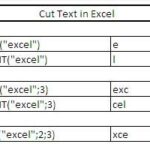Generating QR Codes in Excel: An Overview
Generating QR codes in Excel involves creating a link between Excel data and a QR code generator that can take that data and encode it into the standardized QR format. While Excel doesn’t have a built-in feature to create QR codes directly, you can use several methods to generate them. Here’s an overview of how you might approach this task:
Method 1: Using an Online QR Code Generator
For online generators, prepare your data in Excel (text, URLs, etc.), copy it, and paste it into a free online QR code generator.
Customize the QR code (size, color, error correction) as needed, download the image, and then insert it into your Excel sheet.
Method 2: Using Excel Add-ins
Alternatively, you can search for and install a QR code generator add-in from the Microsoft Office Add-ins store (e.g., QR4Office).
Once installed, the add-in allows you to enter your data and generate QR codes directly within Excel.
Method 3: Using VBA to Generate QR Codes
More advanced users can use VBA to automate QR code generation by leveraging online APIs (like Google’s Chart API). This involves writing a VBA script that sends data to the API via a URL and retrieves the generated QR code image, inserting it into the Excel sheet.
This method requires programming knowledge and careful consideration of the API’s reliability and terms of service.
Regardless of the method used, ensure the encoded data is accurate and correctly formatted, as errors are difficult to correct after the QR code is generated. Encoding large amounts of data increases the QR code’s complexity, potentially affecting its scanability; therefore, thorough testing with various scanners is recommended before widespread use.
When using online services or APIs, prioritize data privacy and security, especially when encoding sensitive information.



